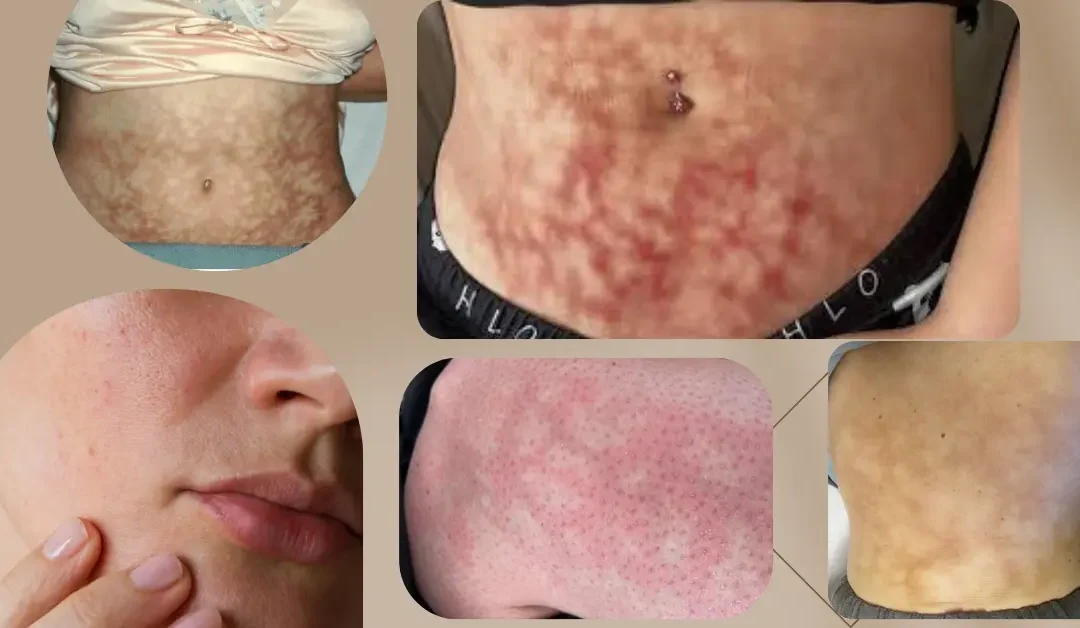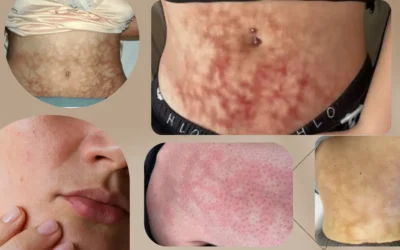Toasted Skin Syndrome (TSS), also known as Erythema Ab Igne, is a skin condition caused by repeated exposure to low-level heat sources such as heating pads, space heaters, heated car seats, and laptops.
It appears as a net-like, reddish-brown discoloration on the skin and may persist even after stopping heat exposure. While TSS is usually harmless, in some cases, it can lead to long-term skin damage or even increase the risk of skin cancer.
If you’re dealing with this condition, you may be wondering how to get rid of it effectively. This article explores the best treatment options, skincare solutions, and medical interventions to help restore your skin’s health.
Step 1: Stop Heat Exposure Immediately
The most important step in treating TSS is to stop exposing your skin to the heat source that caused it. If the condition is caught early, discontinuing heat exposure can allow the skin to heal naturally, and the discoloration may fade over time.
However, chronic cases may require additional treatments to restore skin appearance and function.
Step 2: Use Topical Treatments for Skin Healing
Several topical treatments can help repair the skin, fade pigmentation, and accelerate healing. Below are the most effective options:
1. Moisturizers with Skin Barrier Repairing Ingredients
Keeping the skin hydrated is essential for healing. Look for moisturizers containing:
-
Ceramides – Restore the skin’s natural barrier and improve hydration.
-
Hyaluronic Acid – Provides deep moisture to prevent dryness and irritation.
-
Aloe Vera – Soothes inflammation and speeds up the healing process.
2. Skin-Brightening Ingredients
To fade discoloration, use creams or serums with ingredients such as:
-
Niacinamide (Vitamin B3) – Reduces hyperpigmentation and improves skin texture.
-
Vitamin C – Helps brighten dark spots and boosts collagen production.
-
Hydroquinone (under dermatologist supervision) – A skin-lightening agent that can help even out skin tone.
3. Retinoids (Retinol or Tretinoin)
Retinoids stimulate cell turnover and promote new skin growth, which can help fade TSS discoloration over time. However, they should be used cautiously, as they may cause irritation in sensitive skin.
Step 3: Exfoliate to Promote Skin Regeneration
Gentle exfoliation can help remove dead skin cells and encourage new cell growth. However, it is important not to over-exfoliate, as this can worsen irritation.
Recommended Exfoliating Methods:
-
Chemical Exfoliants – Glycolic acid or lactic acid peels help improve skin texture and fade pigmentation.
-
Mild Physical Exfoliation – A soft washcloth or gentle facial scrub can aid in skin renewal without causing damage.
Step 4: Protect Your Skin from Further Damage
Since TSS makes the skin more susceptible to irritation and hyperpigmentation, it is crucial to protect the affected area.
1. Use Sunscreen Daily
Even though TSS is caused by heat and not UV rays, sun exposure can worsen pigmentation. Apply a broad-spectrum SPF 30 or higher sunscreen daily to prevent further discoloration.
2. Wear Protective Clothing
If the affected area is on your legs, arms, or other exposed areas, wearing lightweight, breathable clothing can protect the skin from further irritation.
Step 5: Consider Medical Treatments for Stubborn Cases
If at-home treatments do not provide noticeable improvement, consult a dermatologist for professional options. Some advanced treatments include:
1. Laser Therapy
-
Intense Pulsed Light (IPL) and Fractional Laser Treatments can target deep pigmentation and stimulate collagen production to restore the skin.
2. Chemical Peels
-
Medium-depth peels with glycolic or trichloroacetic acid (TCA) can help remove damaged skin layers and promote new growth.
3. Microdermabrasion
-
A non-invasive procedure that exfoliates the skin and helps reduce pigmentation.
Step 6: Be Patient and Monitor Your Skin
Skin healing takes time, especially if TSS has been present for a long period. Most cases of mild to moderate TSS improve within a few months after discontinuing heat exposure and following a proper skincare routine.
However, chronic or severe cases may take longer and require medical intervention.
If you notice any unusual changes in the affected skin, such as persistent sores, thickening, or unusual growths, seek medical attention to rule out potential complications like squamous cell carcinoma (SCC)—a rare but possible risk associated with chronic TSS.
Conclusion
Toasted Skin Syndrome can be reversed if caught early and treated with the right skincare routine. The key steps to getting rid of TSS include stopping heat exposure, using topical treatments like moisturizers, retinoids, and brightening agents, exfoliating gently, and protecting the skin from further damage.
For persistent cases, professional treatments such as laser therapy, chemical peels, and microdermabrasion may be needed. With consistent care and patience, most individuals can successfully heal their skin and restore a healthy appearance.


